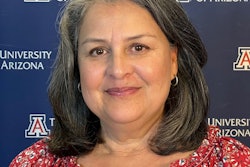Attending a high-quality preschool gives minority students an academic edge as they prepare to enter kindergarten, according to a new study released in June by the independent nonprofit research organization RAND Corp. The authors say the study represents the first comprehensive look at the quality and use of early-childhood care and education programs in California.
Among its key findings, the study showed that the children who start out behind in kindergarten tend to stay behind in elementary school. The study also indicated that those who could especially benefit from preschool are the least likely to be in it: Latino-Americans, African-Americans, and those who come from less-educated or economically disadvantaged families. Only about 15 percent of children from these groups are enrolled in a high-quality preschool program, the study found.
“These low participation rates in high-quality programs represent a missed opportunity to promote the cognitive and social development of more disadvantaged children,” the report said.
The study found that Hispanic students have lower levels of proficiency than their White peers. These gaps in second and third grade are particularly large, exceeding 20 percentage point differences, said the study.
The researchers considered reading proficiency to be an indicator of school readiness. The study noted that “the percentage of proficient Hispanic students in English-language arts in second grade is 31 percentage points below the percentage for whites.” English-language proficiency is a key player in this disparity, as many Hispanic students grow up in a bilingual environment where Spanish is spoken at home and English is learned in school, the report said. The study found that English-learner students in kindergarten and first grade do not perform as well on reading skills as English-only or English-proficient students. An evaluation of statewide schools revealed that students for whom English is a primary language have higher levels of mastery than Hispanic students, a score of 88, compared with 80.
The researchers said the findings “demonstrated that there are sizeable gaps in the extent to which children in California enter school ready to learn, gaps that persist when student performance is measured in kindergarten through third grade.” They propose that in considering solutions to the achievement gap, “it is logical to consider whether one potential approach is to implement policies that will narrow the gaps present at the starting gate, when children first enter the K–12 education system. It is natural then to consider the potential role of high quality preschool programs one or two years before kindergarten entry as part of a strategy to narrow the gaps in school readiness and subsequent student performance in the early elementary grades.”
The study also looked at the effects of preschool programs on school readiness in Michigan, New Jersey, West Virginia, and Oklahoma and five of their surrounding states. There was a strong positive correlation between attending a preschool program and school readiness. Hispanic students in Oklahoma, in particular, showed significant benefits from the preschool program.
Click here to post and read comments
© Copyright 2005 by DiverseEducation.com















